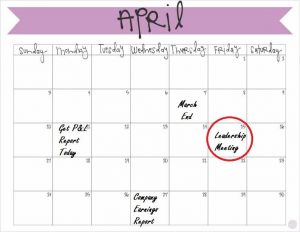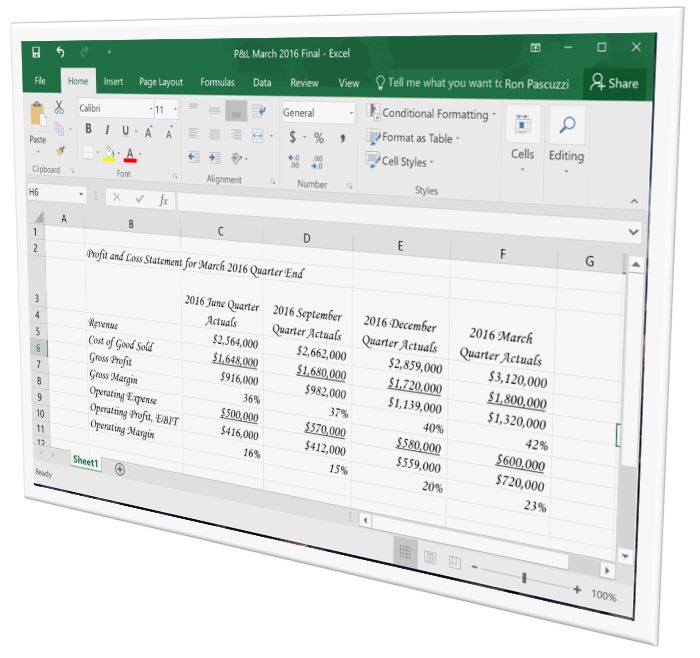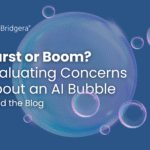Provide an insightful report and you’ll empower an executive for a day. Provide an interactive data dashboard and you’ll empower him for a lifetime.
I have been a consumer of financial performance data for more than 20 years. An insightful performance report (revenue, profit, and expense) empowered me for a day. But in the long run, I was left frustrated for three reasons:
- Reports come too late to react to
- Reports contain errors causing doubt
- Data behind the numbers were rarely accessible
Financial reporting is not about the numbers. Financial reporting is about the story behind the numbers and the actions you take as a result of that story.
My ability to tell the “performance” story has been as good as the data I would get. When I could not see the details behind numbers, I had to make assumptions without certainty of facts. At times I felt like a sports fan shouting at the scoreboard hoping to change the result.
“I felt like a sports fan shouting at the scoreboard hoping to change the result.”
Before I go any further, I do not blame IT. Business Leaders often don’t know what they want until they want it. IT people perform heroic acts trying to anticipate requirements and work with system limitations.
Report versus the Dashboard
Reports capture a moment in time and present static data. You cannot ask reports questions nor can you change the presentation of the data. Thus, you create more variations of reports in anticipation of a need. The result is mass quantities of static reports making it impossible to find the one needed.
Dashboards provide real time feedback by design. More sophisticated dashboards provide options to change the display on-demand and “drill” into the data.

If dashboards were to provide the following capability, we might just have the empowerment executives are looking for:
- Present real time performance against targets with trends
- Allow user access to data source details to explain the numbers
- Allow user access to create custom views of data
- Provide high quality visuals for formal Reports (PowerPoint display and Print)
Can we provide executives with simple self-service dashboards that access financial data, from the source, while it is happening?
Traditional Approach to Reporting
To answer this question, let’s look deeper into the problem with an example. You are an executive responsible for Profit and Loss (P&L) results with financial targets and an event calendar pinned to your board:


The performance period ended on March 31, 2016. It is April 11th and you just received the results report. A simple P&L Statement as shown below:

On April 15th, you will be asked to comment on the story behind the numbers and explain the actions you will take.
What you have been doing to achieve the consistent revenue growth?
Why have you missed your margin target?
The dialog will need to include what you will do different to hit both targets in the next quarter.
What really happens:
The report you receive looks like the report above. It confirmed that you missed your margin target but you felt all quarter you would finish at your target. You start to investigate why you missed but have no data behind the expense lines.
You make a request to Finance for more details. They get back to you in a day with a report. You find an error and request a meeting to sort it out and get a new P&L report. Another day passes. Now it is April 14th and you are still investigating past performance. You go into your meeting on the 15th. You are uncertain the data is correct and so you guess at the cause of the margin miss and how to course correct. I feel like I am in therapy!
What happened?
- Reports came too late to react to
- The reports contained errors
- Data behind the numbers were not quickly accessible
Could data be available sooner in a consumable format or source data made accessible?
Revenue, COGS, and Operating Expense data populating a P&L statement originates from many systems which are not designed for casual use by non-technical executives.
Exporting data from these systems into a usable format can be time consuming. Sensitive data must be removed. The quantity of data may exceed the practical size of the reporting system (Excel). Thus a full data export is generally not a practical answer nor is direct system access.
Next Generation Tools
Affordable Dashboarding and Data Visualization tools may now be mature enough to solve this problem. Microsoft Power BI and Tableau for example are dashboard tools that are targeted toward non-technical people and provide direct access to viewing source database(s).
Comparing Power BI to our four requirements as an example:
1. Present real time performance against targets with trends
Yes, reports can dynamically change with a selection of input parameters.
2. Allow user access to data source details to explain the numbers
Yes, drill down capabilities expose the data behind the numbers with the benefit of direct access to source data.
3. Allow user access to create custom views of data
Yes, natural language query capability is available to produce views on-demand.
4. Provide high quality visuals for formal Reports (PowerPoint display and Print)
Yes, graphics can be placed in PowerPoint for static display. Dynamic views can be created via a web portal.
The proof is in the details but Dashboarding and Data Visualization tools such as Power BI deserve a closer look. At minimum, they provide real-time access to all the data. Executives are empowered to see actual performance data as they happen. This allows them to ask questions, eliminate errors, react faster and be more informed.
I would love to hear success stories and get your opinion about your experiences with business reporting and modern Dashboarding tools.
About the Author: Ron Pascuzzi currently leads the sales and marketing efforts at Bridgera, LLC in Raleigh, NC. Bridgera provides open source software enabled Big Data and IoT applications in combination with custom built modular apps to equip their clients with cost effective solutions to keep them competitive in a rapidly evolving digital era.





